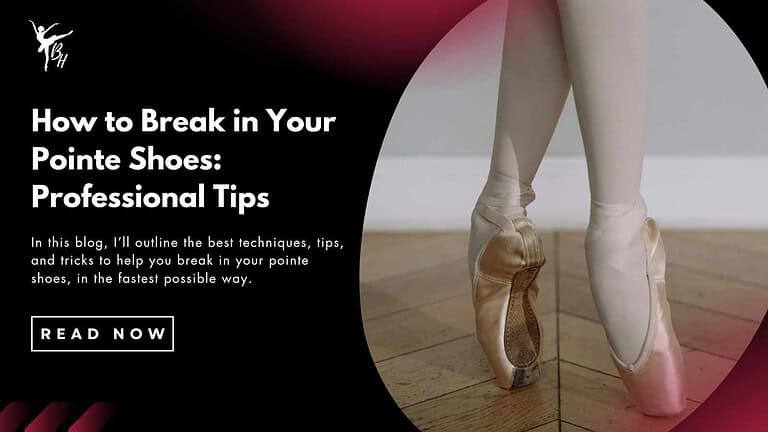The Best Guide to a Pointe Shoe Fitting in 2024
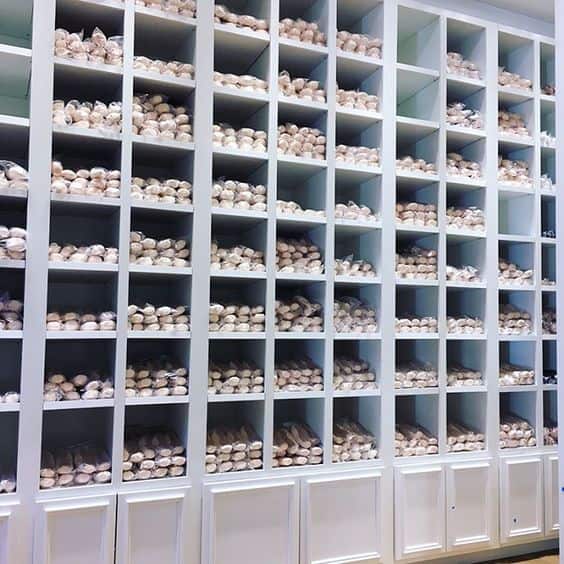
A pointe shoe fitting can be both an exciting and intimidating experience, especially for dancers trying on their first pair.
However, with the help of professional fitters, who understand the nuances of pointe shoes, you can find a pair of pointe shoes that are perfect for your feet and dancing needs.
In my experience, a perfect fit can significantly enhance your performance, as well as keep your feet safer.
In this blog post, I’ll cover everything you need to know about pointe shoe fitting in 2024, from the fitting process to expert tips.
WHAT IS A POINTE SHOE FITTING?
A pointe shoe fitting is a personalised process where a dancer is ideally matched with the right pair of pointe shoes.
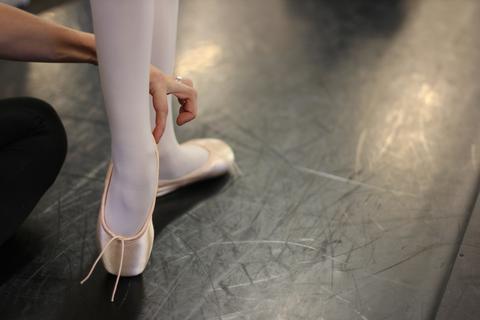
This ensures your shoes provide the right level of support, comfort, and proper alignment.
POINTE SHOES ANATOMY AND FUNCTION
A pointe shoe can be broken down into different sections including the box, vamp, shank, platform, and sole.
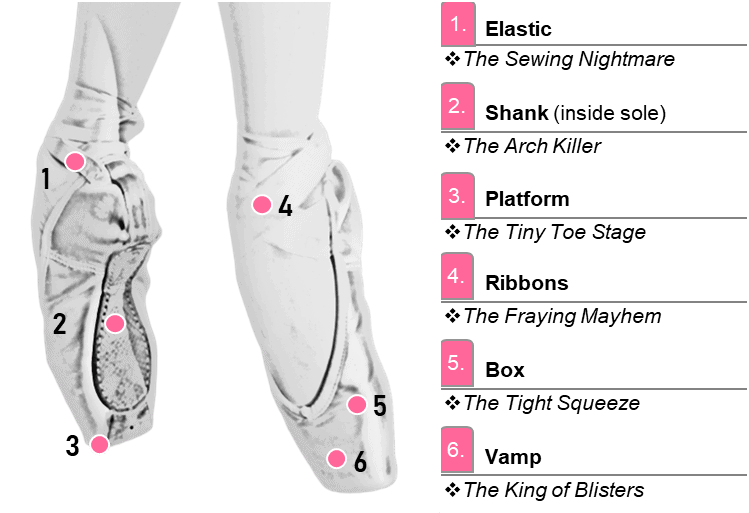
Each of these components works together to provide a pointe shoe that offers the structure, support, and flexibility needed for pointe work.
If you haven’t already, make sure to read my blog on the ‘Five Best Brands of Pointe Shoe’ where I explain the anatomy of a pointe shoe.
PREPARING FOR YOUR POINTE SHOE FITTING
Now for the fun part, let’s get you ready for your pointe shoe fitting.
WHAT TO BRING TO A FITTING SESSION?
What you bring to a pointe shoe fitting is really up to you.
The store will provide disposable tights for you to use, as you don’t want to be fitted wearing socks.
I also recommend brining along any accessories you normally put inside your pointe shoe (ie. toe pads, toe spacers) for comfort and protection.
It’s important to be fitted for pointe shoes with these items, as they can affect the size and shape of your foot.
There’s nothing worse than buying a pair of pointe shoes only to realise later that they are not wide enough or that you can’t squeeze everything inside the box.
PREPARING YOUR FEET
To prepare your feet, ensure your toenails are trimmed short.
If you have any blisters, cover them with band-aids or tape for protection.
THE FITTING PROCESS: STEP-BY-STEP GUIDE
Let’s get you started with some insight into what to expect at a pointe shoe fitting.
Trust me, being prepared and knowledgeable can help both you and your fitter find the most suitable pair of pointe shoes.
STEP 1 – CHOOSING THE RIGHT STORE AND FITTER
There’s no need to travel far to find a specific ballet store unless you’re looking for something very particular.
Most well-known ballet stores carry a variety of brands and styles. If you visit a store that specialises in a single brand, like Bloch, you’ll find only their pointe shoes.
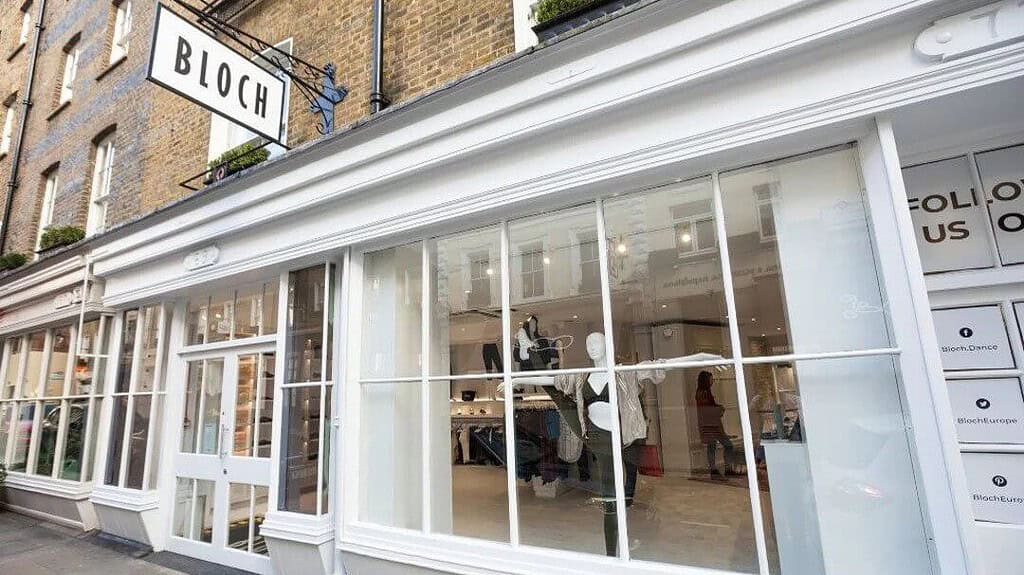
If you have a specific brand in mind, visiting their store is a good choice.
Otherwise, I recommend going to a store that offers a range of models so you can try on multiple pairs and find the best fit.
STEP 2 – MEASURING YOUR FEET ACCURATELY
The pointe shoe fitter will likely start by measuring your feet and asking for your shoe size as a base reference.
They will assess the shape of your feet, including the width, length, and shape of your toes, your arch or instep, and the shape of your heel.
This information helps them begin searching for pointe shoes that they believe will be a suitable match for your feet.
STEP 3 – TRYING ON DIFFERENT BRANDS AND MODELS
I always recommend trying on different brands, not just various styles of the same brand.
Each brand has its unique shape, strength, and materials, which can cater to different types of feet.
Exploring multiple brands provides more versatility and choice, especially if you’re looking for something specific or durable.
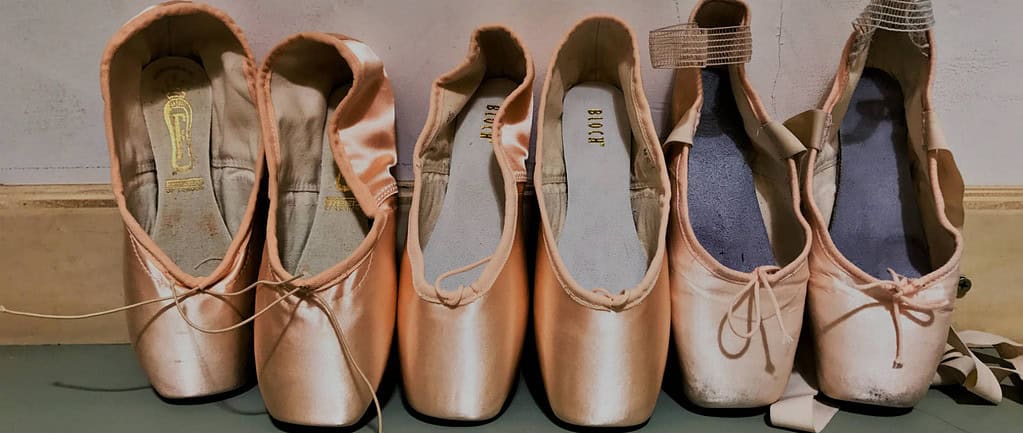
Throughout my career, I’ve tried Bloch, Grishko, Sansha, and Gaynor Minden.
As your feet become stronger, more flexible, and change shape (yes, it’s possible), you might find that different brands will better meet your needs.
In the end, I found that Gaynor Minden suited me well for professional use, as the durability allowed me to use each pair for a longer period.
The bottom line is don’t hesitate to experiment with different brands to find the best fit for you.
STEP 4 – CHECKING FOR PROPER FIT
Often, your fitter will start by asking you to stand in first position to observe the natural shape of your feet and your arch.
From there, you’ll perform a demi plié to assess the length of your Achilles tendon.
Standing in parallel allows the fitter to examine the alignment and shape of your toes, particularly if you have bunions.
Additionally, a tendu à la seconde may be performed to further evaluate the fit.
Once you have the shoes on, you’ll repeat similar movements, including standing en pointe, to assess:
If everything feels and looks good, you may have found your perfect pair. If not, you’ll repeat the process with a different pair of pointe shoes.
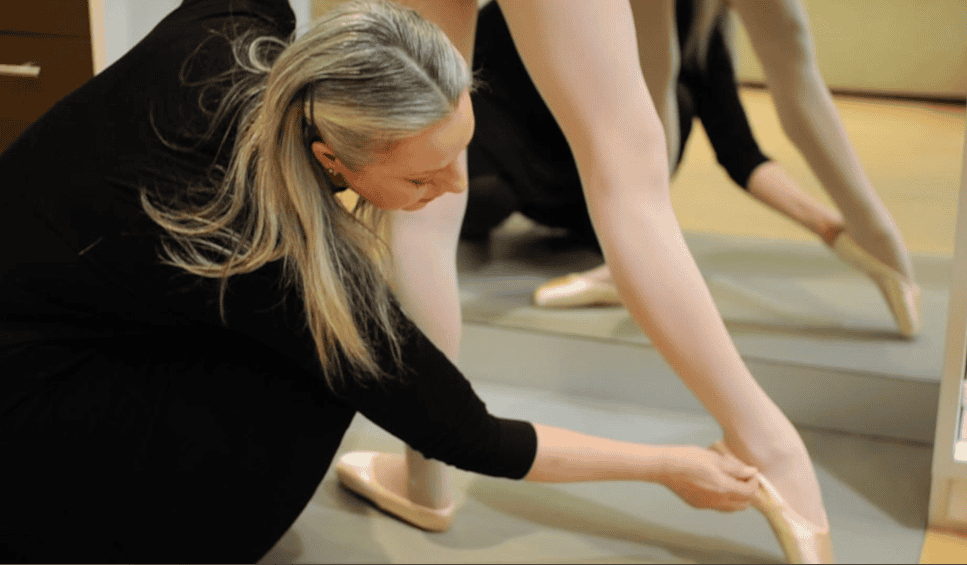
COMMON FITTING ISSUES AND SOLUTIONS
I recommend looking out for some common fitting problems as they may require further adjustments.
EXCESSIVE TOE CURLING OR PRESSURE ON THE TOES
If your toes are curling or you experience pain, it may indicate that the box is too tight or not shaped correctly for your foot.
Consider trying a different size or width, or a shoe with a different box shape.
For example, if you’re using a tapered shoe, you might need a wider fit instead.
HEELS SLIPPING OR TWISTING
If the heels of your pointe shoes are slipping or twisting, the shoe might be too large or lacking sufficient support.
Ensure the fit around the heel is snug, and consider trying a different style or brand for a better fit.
For example, you might need a lower or higher heel depending on the issue.
Additionally, make sure your ribbons are sewn in the correct position to enhance heel stability.
SHOES SOFTENING TOO QUICKLY
If your pointe shoes are softening too quickly, they may not be the right shank strength or material for your foot.
For example, if you have extremely flexible feet, you might need a harder shank.
Consider trying shoes with a stronger shank or different construction.
Also, proper shoe care and rotating out your pairs can help extend the life of your shoes.
POINTE SHOE BRANDS AND MODELS TO CONSIDER
If you’re new to pointe, start by considering well-known brands.
They often offer a range of options that can help you find a good fit and support as you begin your pointe work.
While some schools may have preferences for specific brands, the most important thing is to find a brand and model that suits your feet, rather than focusing solely on meeting a particular requirement.
POPULAR BRANDS
There are many different brands of pointe shoes. Some of the popular ones are Bloch, Sansha, Capezio, Grishko, Freed, and Gaynor Minden.
Each brand offers a range of models designed to suit various foot shapes and experience levels.
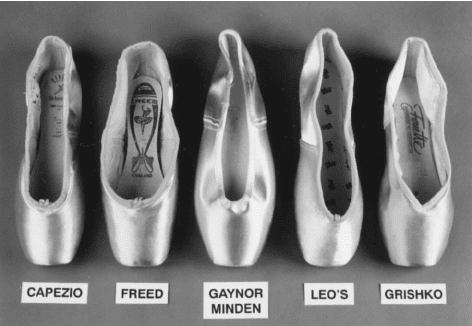
RECOMMENDATIONS BASED ON FOOT SHAPE AND EXPERIENCE LEVEL
Wide Feet:
Narrow Feet:
Beginners:
Advanced Dancers:
CUSTOMISING YOUR POINTE SHOES
If you’re looking for something specific because you prefer a particular pointe shoe but need adjustments, customisation is an option.
CHANGING CERTAIN ASPECTS OF YOUR SHOES
You can alter parts of the shoe that don’t work for you, such as:
Keep in mind that these customizations come at an additional cost.
For beginners, a properly fitted shoe is usually a good starting point.
As you progress and better understand your needs, you can consider making modifications.
SEWING RIBBONS AND ELASTICS
Sewing your pointe shoes can be a tedious task, but an essential one.
By attaching ribbons and elastics, you ensure that the shoes are securely fastened to your feet and ankles, providing the proper support and comfort needed to dance effectively en pointe.
BREAKING IN YOUR POINTE SHOES
Breaking in your pointe shoes is optional but can be extremely beneficial in moulding and softening the shoes to your foot shape and arch before you wear them for class or performances.
Some dancers find that the stiff, rigid material of new pointe shoes makes them feel quite different and challenging to wear compared to a pair that has been broken in over a period of weeks.
POINTE SHOE FITTING FAQS
HOW LONG DOES A POINTE SHOE FITTING TAKE?
A pointe shoe fitting can be quick or may take as long as necessary until you’re happy and satisfied with your selection. Some dancers’ feet are easier to fit than others, and that’s perfectly okay.
SHOULD I WEAR TIGHTS TO A POINTE SHOE FITTING?
It’s up to you if you want to wear tights to a pointe shoe fitting. However, if you choose not to wear tights, you should be provided with a disposable, sock-like tight to use during your fitting.
WHAT ARE COMMON MISCONCEPTIONS ABOUT POINTE SHOE FITTINGS?
Some common misconceptions about pointe shoe fittings include the belief that:
In reality, these assumptions are not accurate.
WHAT ARE THE SIGNS OF AN ILL-FITTING POINTE SHOE?
An ill-fitting pointe shoe will likely not look right on your foot and may cause discomfort or pain.
If you notice excessive wiggle room, digging in, or if your toes are curling or popping out of the box, it could be a sign that you’ve been improperly fitted.
Your pointe shoes should work with you, not against you, so if things aren’t feeling right, consider making a change.
If you’re new to pointe and unsure about your selection, bring your shoes to your ballet teacher for their assessment before breaking them in or sewing anything.
This way, you can get a second opinion and have the option to exchange the shoes if they aren’t the right fit.
WHAT IS THE IMPORTANCE OF REGULAR POINTE SHOE FITTINGS?
You might not need regular pointe shoe fittings, but as you advance in your training and develop more strength in your feet, consider getting a fitting again.
This can help you switch brands or styles if you notice your pointe shoes aren’t providing adequate support or are softening too quickly.
WRAP UP
A successful pointe shoe fitting can significantly enhance your ballet experience, providing the necessary support and preventing injuries.
Remember, finding the perfect fit may take time and patience, but it’s worth the effort.
However, if the fitting is taking too long, it might be due to the fitter’s level of experience, and you might want to seek a second opinion from someone else.
The most important thing in the beginning is to have a pair of pointe shoes that are functional and suited to your skill level, rather than just focusing on their appearance.
By following the tips and advice in this guide, you’ll be well on your way to finding pointe shoes that help you perform your best.
Happy dancing!







